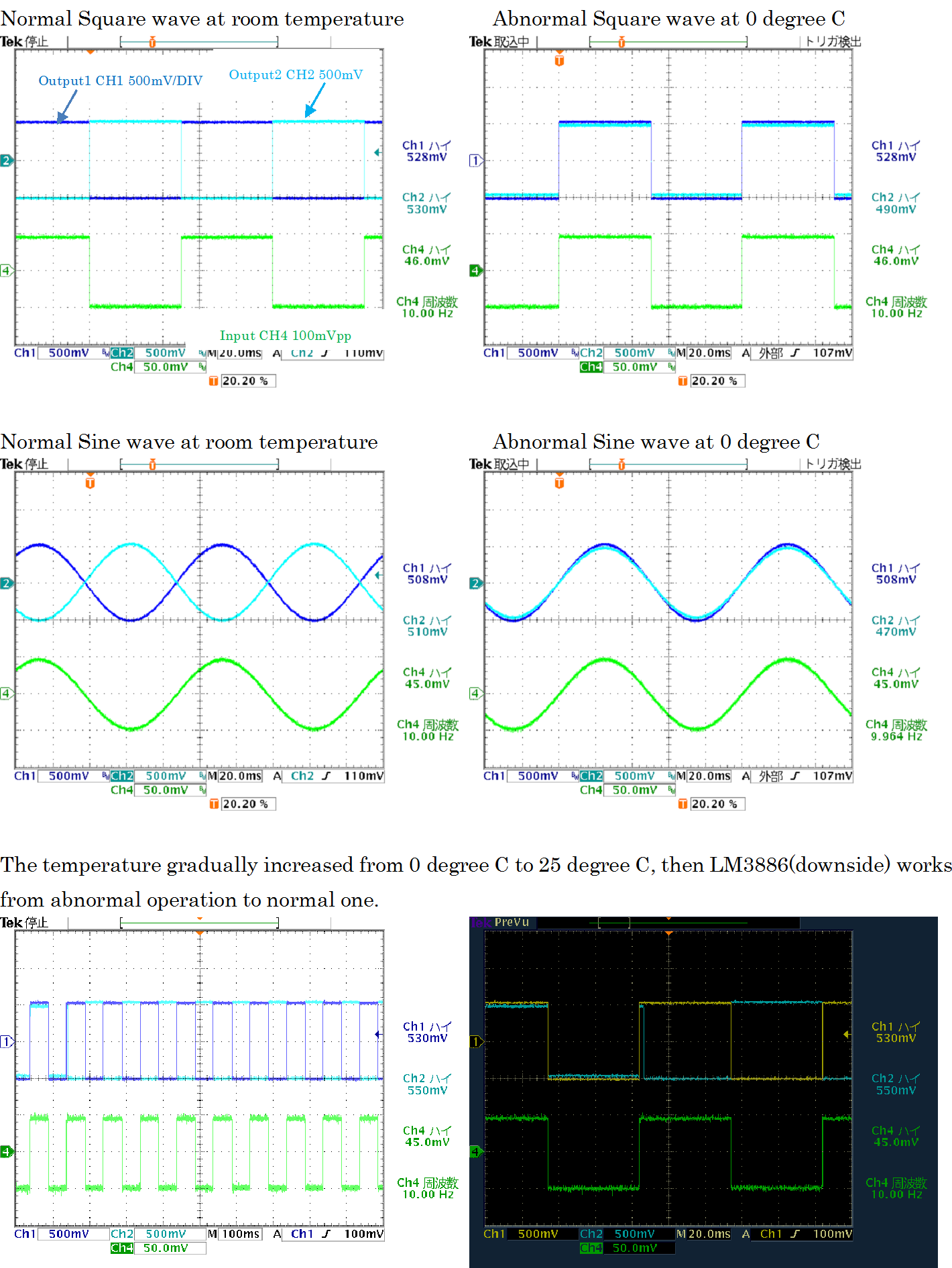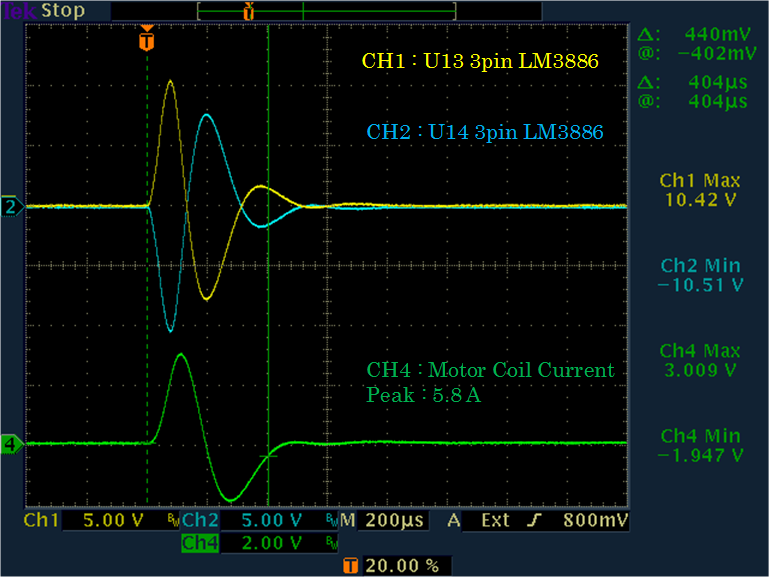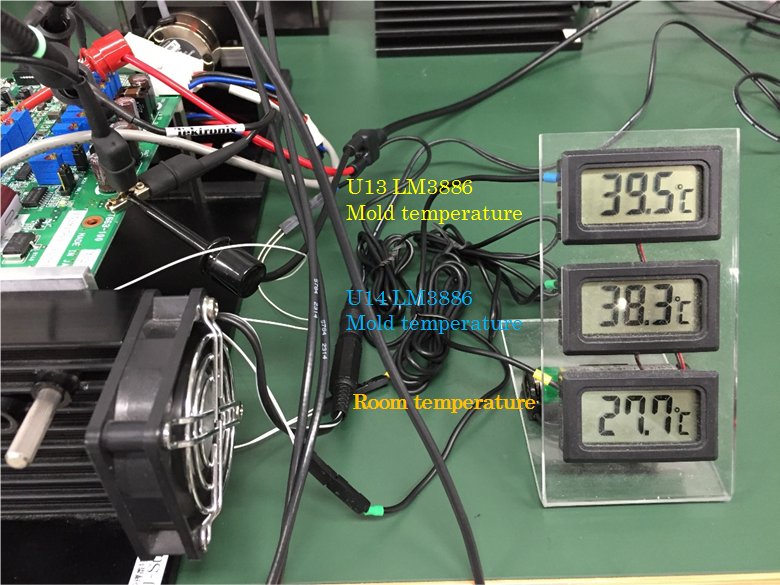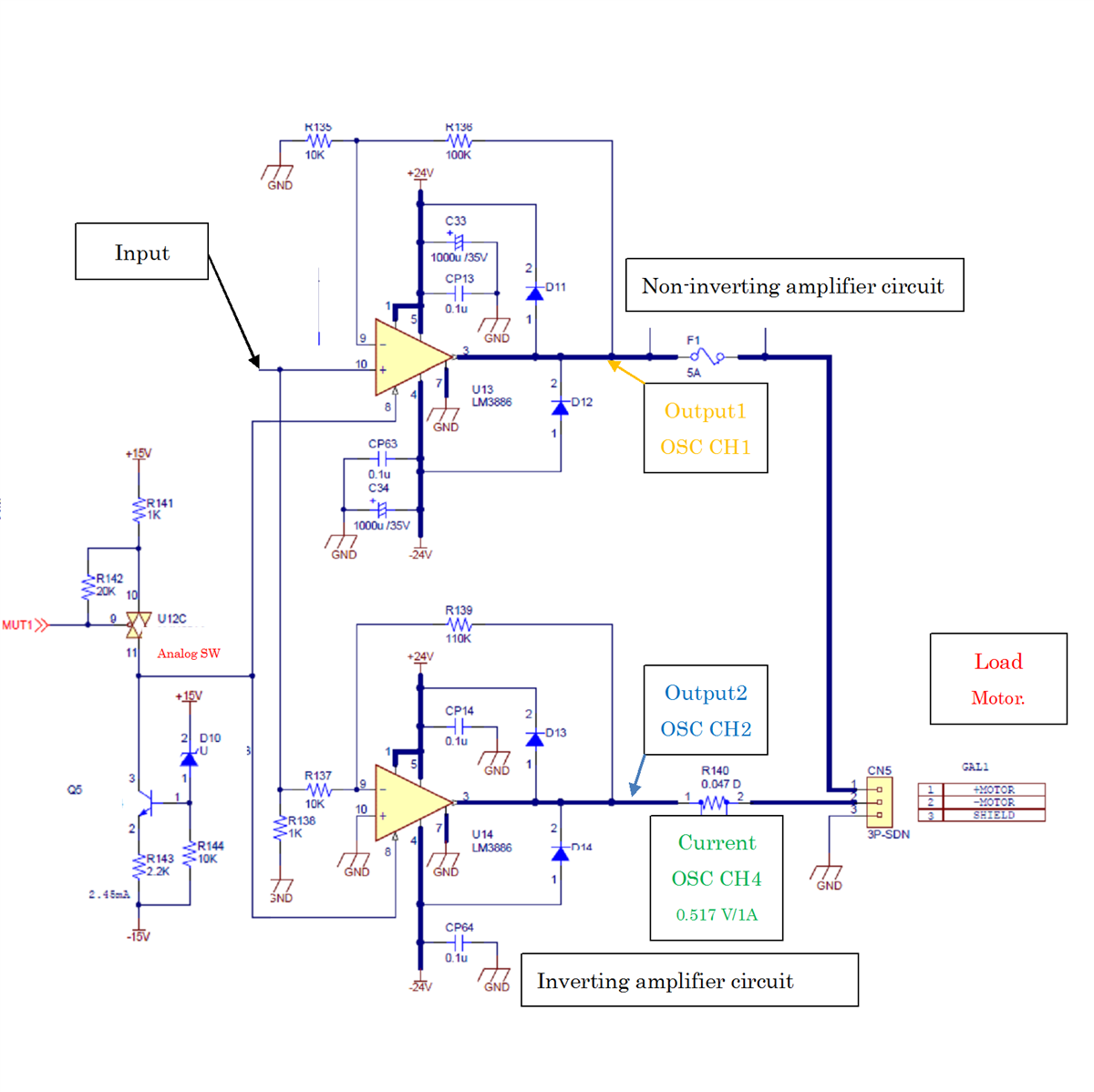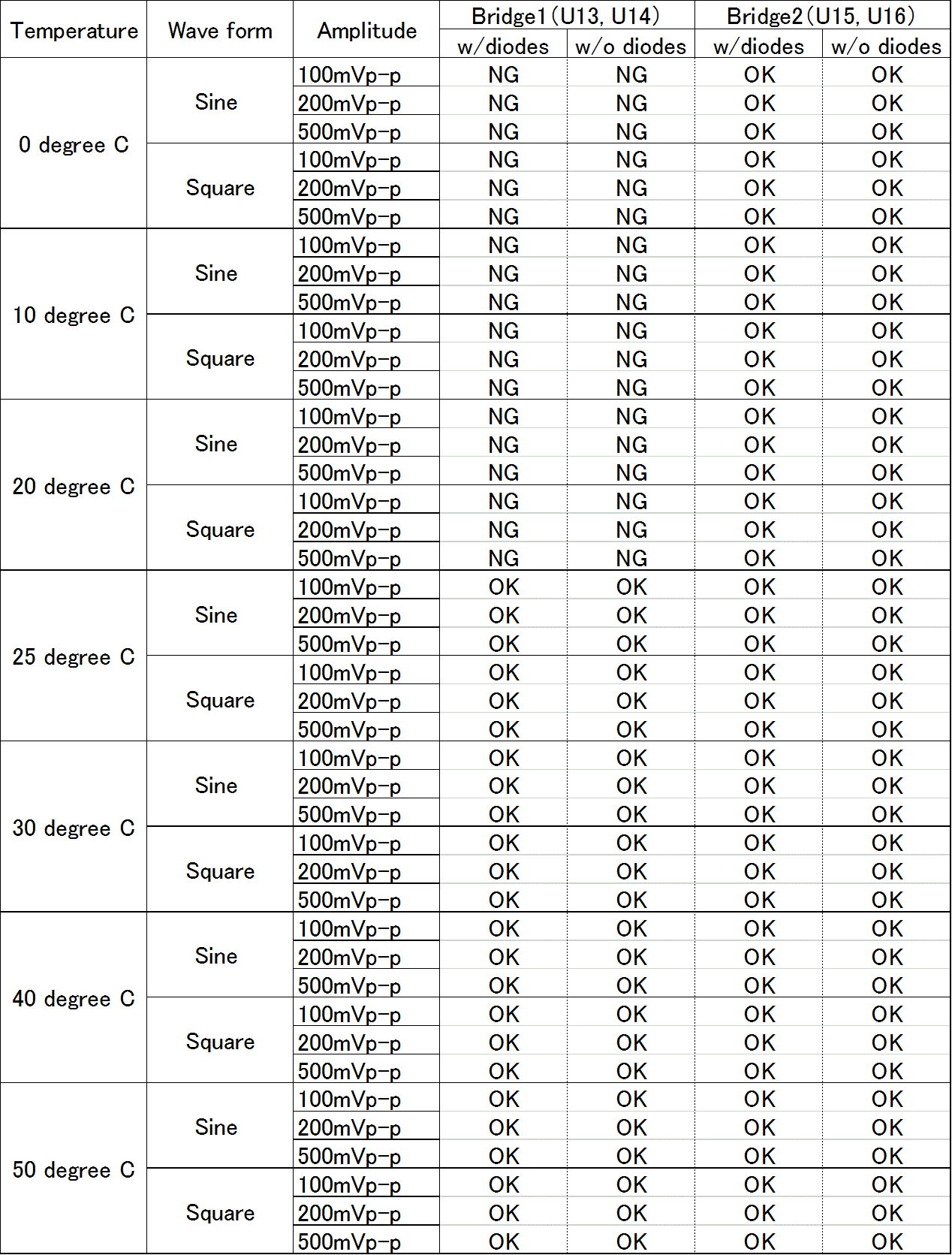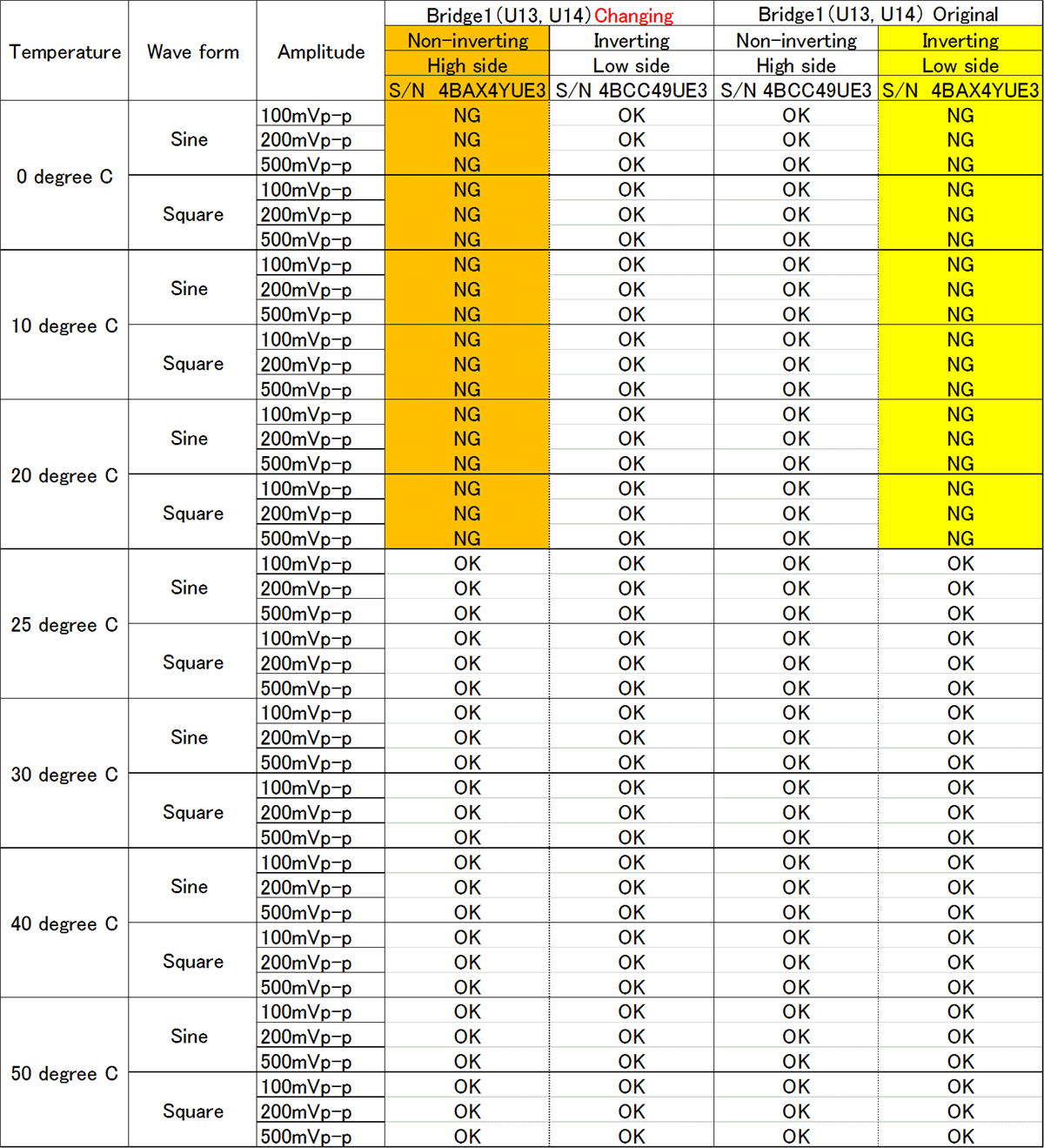I'm Tsukiyama Masahiro and electrical engineer for motor driver circuit.
There is a problem with LM3886 operation at low temperature.
It does not work at low temperature. But it works at room temperature.
Would you tell me any advice what problem is or LM3886 has any damage?
Two LM 3886 ICs are used in our motor driver circuit. The circuit configuration is bridge type.
We found that our motor did not work at low temperature and it seemed that one of two LM3886 ICs did not work at low temperature.
- Usage condition
Power supply : +/- 24 V
Operating Temperature : 0 to 50 degree C
Circuit board has heat sink and cooling fan. IC mold temperature is controlled below IC's specifications.
Motor : inductance 173uH, Coil resistance : 1.07 ohms
Gain : 11
- Circuit around LM3886
The circuit to verify the root cause of abnormal operation of LM3886 is below.
The load is resistor 1k ohms instead of motor.
The input is used a function generator, it is connected to LM3668 10 (Vin+ )
Input signal : Square wave, Sine wave, 100mVp-p, 10Hz
- Oscilloscope measurement
The probe definition
CH1 : High side LM3886 Output 500mV/1DIV
CH2 : Down side LM3886 Output 500mV/1DIV
CH4 : Input signal 50mV/DIV



